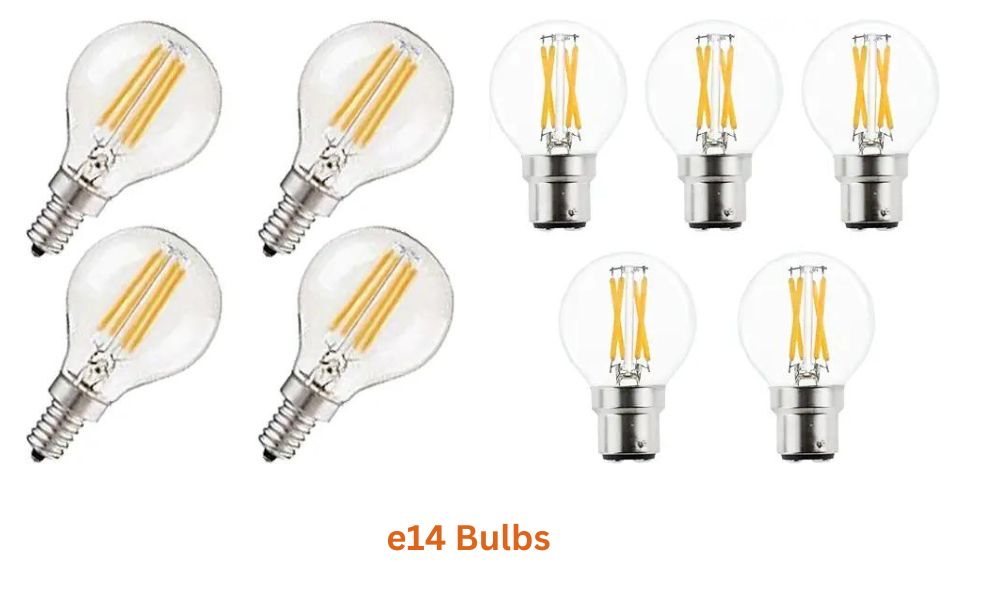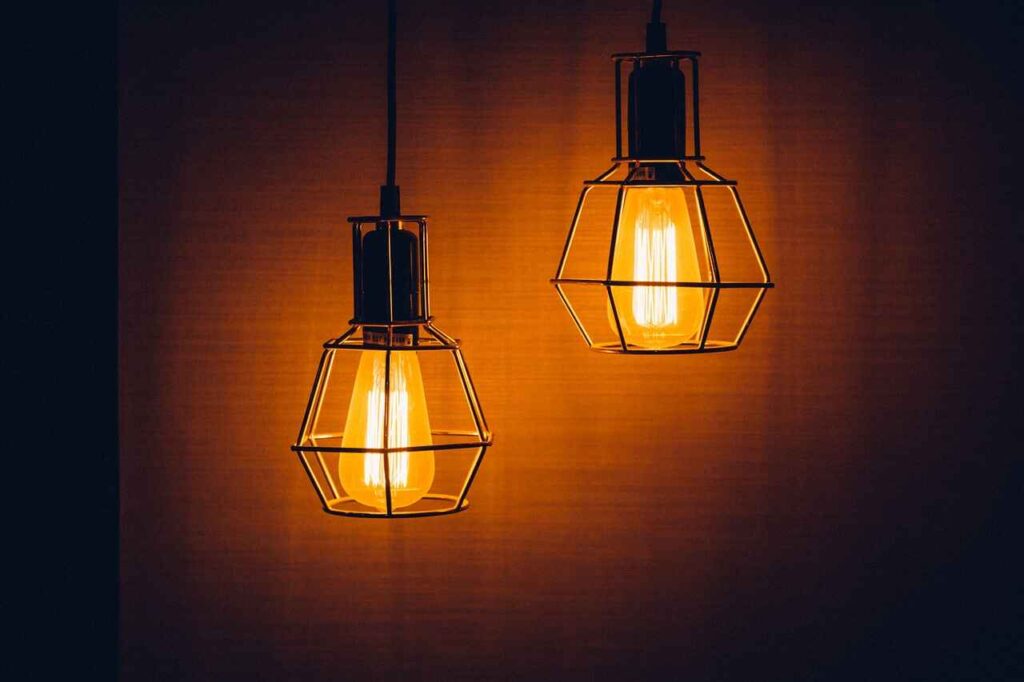When it comes to lighting, choosing the right bulb can make a big difference in your home’s ambiance. Two popular types of bulbs are E27 and E14. But what sets them apart? In this article, we’ll explore the key differences between E27 and E14 bulbs, their uses, and help you decide which one is best for your needs.

What Are E27 and E14 Bulbs?
E27 and E14 bulbs refer to the type of light bulb and its fitting or socket. The numbers denote the diameter of the bulb base in millimeters. Let’s break down these types of bulbs:
- E27 Bulbs: The “E” stands for Edison screw, and “27” refers to the 27mm diameter of the base. E27 bulbs are often called “standard” or “ES” (Edison Screw) bulbs. They are widely used in households and commercial settings due to their versatility.
- E14 Bulbs: Similarly, “E14” indicates an Edison screw base with a 14mm diameter. E14 bulbs are commonly known as “candelabra” bulbs. They are smaller and often used in decorative fixtures.
What is The Difference Between e27 and e14 Bulbs
1. Size and Fitting
The primary difference between E27 and E14 bulbs is their size. E27 bulbs have a larger base, making them suitable for more robust fixtures. They are commonly found in standard light fittings around the home.
E14 bulbs have a smaller base, which is ideal for compact or decorative fixtures. Their smaller size allows them to fit into places where E27 bulbs would be too large.
2. Brightness and Wattage
Due to their size, E27 bulbs generally accommodate higher wattages compared to E14 bulbs. This means E27 bulbs can produce more light. They are ideal for areas where you need bright illumination, such as living rooms, kitchens, and workspaces.
E14 bulbs, with their lower wattage, are often used in situations where a softer light is needed. They are popular in chandeliers, sconces, and smaller lamps.
3. Applications
- E27 Bulbs: Given their size and higher wattage, E27 bulbs are used in a variety of settings. They are common in ceiling lights, floor lamps, and outdoor lighting. Their ability to provide a lot of light makes them a go-to choice for general lighting.
- E14 Bulbs: These are more often used in decorative lighting. You’ll find them in lamps with intricate designs, small chandeliers, and other decorative fixtures. Their smaller size and softer light are perfect for creating ambiance.

4. Design and Aesthetics
E27 bulbs are typically more utilitarian. They come in a wide range of styles, from standard incandescent to energy-efficient LED options. They are designed to be functional and provide ample light.
E14 bulbs often come in more decorative designs. They are available in various shapes and finishes, making them suitable for elegant or stylish lighting solutions. They are designed to enhance the appearance of light fixtures.
Which One Should You Choose?
Choosing between E14 and E27 bulbs depends on your specific needs:
- For General Lighting: If you need bright, general lighting for a larger area, E27 bulbs are a better choice. They offer more light output and are compatible with standard fixtures.
- For Decorative Lighting: If you’re looking to enhance the look of a decorative fixture or need a bulb for a small lamp, E14 bulbs are ideal. Their smaller size and design options make them perfect for adding a touch of elegance.
How to Switch Between E27 and E14 Bulbs
If you’re considering switching between E27 and E14 bulbs, here are some tips:
1. Check the Fixture: Ensure that your light fixture is compatible with the bulb you intend to use. Some fixtures are designed specifically for E27 or E14 bulbs.
2. Adjust Wattage: When switching, consider the wattage requirements. Ensure that the new bulb meets the wattage limits of your fixture to avoid any issues.
3. Consider Energy Efficiency: Both E27 and E14 bulbs are available in energy-efficient options. If you’re switching, consider choosing LED bulbs for both types to save on energy and reduce your electricity bill.
Conclusion
Understanding what is the difference between e27 and e14 bulbs can help you make informed decisions about your lighting needs. E27 bulbs are larger and offer brighter light, making them suitable for general illumination. E14 bulbs, on the other hand, are smaller and often used in decorative settings.
Whether you need bright, functional lighting or elegant, ambient light, there’s an E27 or E14 bulb to fit your needs. By considering the size, brightness, application, and design of the bulbs, you can choose the right type for your home or office.
Related articles:
- Difference between b22 and e27 bulb
- Difference between b22 and e27 bulb
- Difference between ac and dc led bulb
- Difference Between es and bc Bulbs
- e14-vs-e15-bulb
Hi, I’m Malik Suhail—an SEO expert, web designer, and passionate blogger with 2 years of experience. I specialize in crafting content that is not only informative but also tailored to meet the needs of my readers.
I write about diverse topics, always striving to simplify complex ideas and provide valuable insights that resonate with my audience. Whether it’s about SEO strategies, web design trends, or blogging tips, I am committed to delivering well-researched, practical, and easy-to-understand information.
My mission is to help readers navigate the digital world with confidence and clarity. I believe in adding value through authentic content that inspires action and delivers results.


